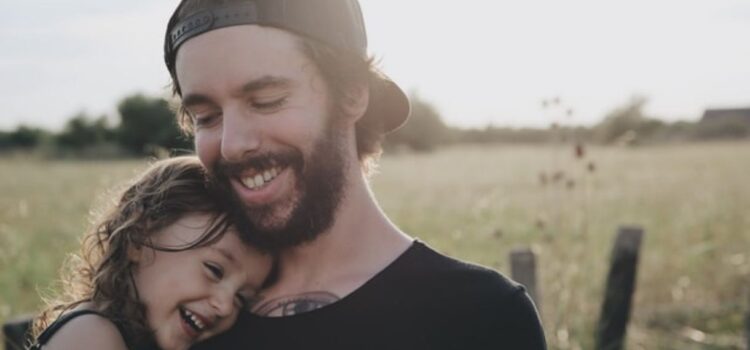

This article is an excerpt from the Shortform book guide to "The Happiness Project" by Gretchen Rubin. Shortform has the world's best summaries and analyses of books you should be reading.
Like this article? Sign up for a free trial here .
What is the secret to happy parenting? What are some ways you can infuse your parenting experience with more joy, happiness, and positivity?
If you reflect on your individual parenting moments—such as throwing a birthday party or going to an amusement park—you’ll likely find many negative in-the-moment emotions, such as frustration, stress, or impatience. While you can’t eliminate these feelings altogether, you can choose to look beyond them and focus on the overall happy experience of parenting.
Read further for tips on happy parenting.
What’s the Secret to Happy Parenting?
There are a few ways to put more happiness into your parenting. First, we’ll discuss how to work on your communication with your children and then we’ll explore the different ways you can make more happy memories.
Rethink Your Communication Style
You won’t always be joyful when you’re talking to your children—but changing the way you speak in subtle ways will make for more silly moments, less whining, and better understanding between parent and child. There are two ways to work on changing your communication style.
Lighten Up Stressful Activities
When you want to get unpleasant or stressful activities over with, you might be strict with your orders, stop your kids from messing around, or raise your voice. However, if you find ways to lighten up these moments or even participate in your children’s goofing around, everyone—including you—will be happier.
- Lighten up where possible. See if you can add a pleasant edge to an unpleasant task (e.g. singing in the morning to wake up your children).
- Deflect whining. If you have a whining kid—which would make anyone feel less than cheerful—find positive ways to distract them from their complaints instead of raising your voice or ordering them to stop. For example, you might make a silly rhyme of your child’s complaints, or make up a story they can participate in.
- Reframe your thinking around difficult or frustrating tasks. First, tell yourself you enjoy the task. For example, “I’m happy to take my kids to karate class. It’s fun to watch them learn.” Second, imagine someone else taking over the task—this makes you feel grateful that it’s you that gets to do it. For example, you might think, “Would I let someone else help Sarah with her school project? No, I always get to do them with her.”
Of course, the frustrations of parenting can only be pushed so far—it’s likely you’ll snap at your kids sooner or later. What’s important in these moments is that you stop snapping as soon as you can. You’ll find that the aftermath is much less stressful than it would have been, had you not stopped yourself.
Work With—Not Against—Feelings
Minimize the number of energy-draining meltdowns you experience by really listening to your children and showing them that they’ve been heard.
Children’s meltdowns are often fueled by being contradicted by adults—for example, “You’re not tired, you just had a nap,” or, “You don’t hate green beans, you just ate them last night.” A more effective way to deal with your children’s emotions, no matter what they are, is to acknowledge them instead of denying them. Repeat them back to the child so they understand that they’ve been heard. For example, instead of saying, “You don’t hate your coat,” try, “You don’t want to take off your princess dress to put on your coat. But you have to put it on if you want to play outside.”
Acknowledging the feelings of your children has a twofold positive effect. First, ignoring bad feelings makes them stronger, but talking about bad feelings clears mental space for good feelings to come back quickly. Second, in tough moments you’ll find yourself acting more with love and tenderness, rather than with frustration, argument, or dismissal.
There are five effective ways to repeat your children’s feelings back to them so that they feel acknowledged.
- Take a note. Even if you lose or throw away the paper, writing down what your child says shows them that you’re paying attention.
- React with touch instead. At times, your child doesn’t need a verbal response, they just need to be held for a few minutes.
- Steer clear of “no” and “stop.” Show that you understand what they want while explaining why it can’t happen. For example, instead of, “No, we’re not going to the park,” you might say, “I know you want to go to the park, but we need to stop at the grocery store now.”
- If I were a genie… Show that you’d grant their wish if you could—this acknowledges their desire and puts you on their side against the circumstances. For example, instead of saying, “Stop complaining about your rain jacket,” you might say, “If I was a genie, I’d make it stop raining so we wouldn’t have to wear rain jackets.”
- Agree that something is hard to do. Children are more likely to work harder on tasks that you agree are difficult and become more easily frustrated with tasks you claim are easy. For example, instead of, “Come on, putting your shoes on isn’t that hard,” try, “I know putting shoes on can be hard. It helps if you sit down first.”
(Shortform note: For more ways to acknowledge your children’s emotions, read our summary of The Whole-Brain Child.)
Make More Happy Memories
Remember that while your days might drag on, the years will fly by. Become more engaged in these “dragging” days by focusing on two actions: not rushing through your projects and preserving your happy memories.
Don’t Rush Projects
Projects, while they’re often for fun events like traditions, birthdays, or school events, are usually very time- and energy-consuming—but have high potential for becoming happy memories for both you and your children.
For example, your child has decided she wants to build dollhouse furniture for her sister for Christmas, using craft bits lying around the house. You think it would be much easier to just buy the furniture, but you work with your child on it. Together, you spend every night for a month dreaming up new pieces of furniture to make. Having patience for the full life cycle of a project like this maximizes the happiness of the experience because you go through four stages of happiness:
- Anticipation of happiness. Your child gets to feel the anticipation and excitement of making her sister an elaborate gift.
- Savoring happiness. You get to savor the happiness of building something together every night and coming up with new ideas.
- Expressing happiness. Your child gets to express her happiness on Christmas morning—first, when she excitedly helps her sister unwrap the furniture and again later when they play with it together.
- Recalling happiness. You and your child both get to recall the happy memories of working on the project together and playing with the dollhouse.
Additionally, letting children meander their way through projects can remind you of joys that you overlook or don’t experience anymore as an adult. For example, at Christmas, you’re usually focused on the stress and rush of the holiday season. When you work slowly on the dollhouse with your daughter, you’re reminded of the joy of creating a gift for someone and the anticipation and excitement around the holidays.
Preserve Happy Memories
You can build on the happiness of a moment by keeping the memory of it as vivid as possible for your future self to reflect on. To help preserve happy memories for yourself and your family members, pay attention to how they choose to reminisce—for example, they might enjoy going through old homemade videos or read through old journal entries.
Rubin found three ways to preserve happy memories in a meaningful way for her family.
- Photo albums and keepsake boxes. Put together a photo album, writing notes alongside the pictures to help keep the memories intact. Or, save up some of your children’s drawings and papers from school in a nice file box to create a glimpse of their childhood to look back on.
- Update emails. Send fun updates to your extended family about your children’s everyday lives—lost teeth, funny things they did or said recently, something they did that reminded you of a family member, and so on. This act extends the happiness of your memories to those who didn’t witness the experience but find delight in it all the same.
- Traditions. Traditions are a source of happiness for many reasons—they’re a joyful way to experience passing time; they make families feel more tightly knit; and children love the anticipation and structure they create. Commit to the effort of keeping up traditions—such as schlepping out to a farm to cut down your own Christmas tree, or sewing Halloween costumes—and keep in mind that traditions can be created at any time. Experiment with making your own traditions with your children. For example, you might go out for a nice dinner the night before the first day of school, or have a monthly family movie night.

———End of Preview———
Like what you just read? Read the rest of the world's best book summary and analysis of Gretchen Rubin's "The Happiness Project" at Shortform .
Here's what you'll find in our full The Happiness Project summary :
- How to increase the overall happiness in your daily life
- Why changing everything won't bring you happiness
- How to create your own year-long happiness project






